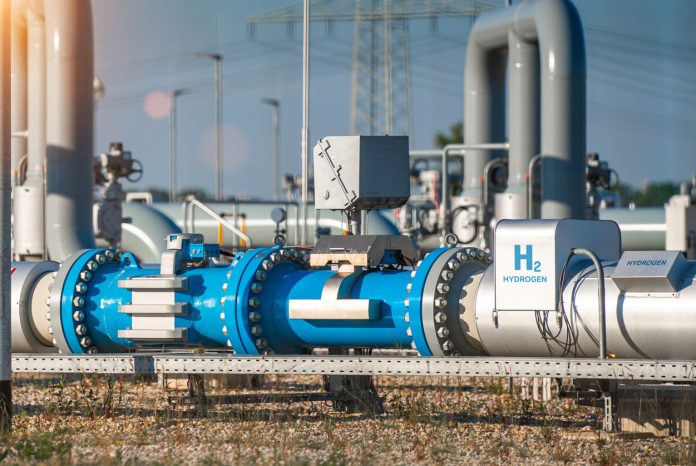Discover Plug Power Europe’s opinion of the European Hydrogen Bank as they take a deep dive into its benefits and limitations
Plug Power Europe is well positioned to appreciate the benefits and limitations of the European Hydrogen Bank (EHB) as we have deployed the largest installed base of electrolysers in Europe. Some of our clients were successful in the EHB, and we are pleased for them. However, the majority needed more support to move forward with their project.
With a ceiling price set at €4.50 ($4.81) per kilogramme, the EHB provided the potential for subsidies surpassing the maximum $3/kg production tax credit outlined in the Inflation Reduction Act (IRA). Nevertheless, the winning bids unveiled on 30th April revealed prices significantly below the ceiling price, ranging from €0.37 to €0.48 per kg.
Public decision-makers may be pleased at first glance, as they maximise the number of electrolyser capacity for limited subsidies, which should help to maximise the volume of CO2 abatement per euro of subsidy. Unfortunately, there is no free lunch, and producing hydrogen for this industry comes at a cost. As disclosed by TotalEnergies’ CEO, Patrick Pouyanné, at a special meeting of the World Economic Forum in April, most of the bids he received are in the range of €8 to €9/kg, far from the handful of cents for the winning bids.
The European Hydrogen Bank: An admirable intention lacking means to make a difference
We must underline the innovative spirit of the European Commission and, more specifically, its Directorate-General for Climate Action (DG CLIMA).
The initial €800 million envelope is set to be completed by an additional €2.2 billion, and it aims to bridge the pricing gap between green hydrogen generated from renewable sources and grey H2 produced from unmitigated fossil gas.
The auction’s ambitious objective is to “unlock private investments in hydrogen value chains” by “connecting renewable hydrogen supply with the emerging demand by European off-takers”. (1)
€800 million budget seems small to accomplish it, even considering the extra €2.2 billion coming later in 2024. It is too small to make a real difference in the perspective of the 10 million tonnes of domestic production the European Union (EU) aims for in 2030.
It would be cruel to compare the EU envelope with the IRA scheme, which is $260 billion, and its fixed premium for hydrogen with a maximum of $3/kg production tax credit. Still, a $260 billion would get us 8.7 million tonnes of hydrogen subsidised at $3/kg. This would effectively make or break business models and become the enabler that:
- Favors European investments.
- It helps to accelerate the decarbonisation roadmap of existing sources of pollution.
- Send a message to the world.
What is our European ambition? More than a drop in the ocean.
Is this first auction a bad signal for the hydrogen sector?
As highlighted by Patrick Pouyanné, the bids do not illustrate the actual gap between renewable and grey hydrogen. One could argue that off-takers cover the green premium gap. It seems more likely. However, the applicants took a strategic decision to underbid, focusing on getting a subsidy at all costs, considering that a low subsidy was better than no subsidy.
It is also worth remembering that one of EHB’s specificities is that there is no cumulation rule. Winning projects will be forbidden if the EHB support is combined with other mechanisms. With a bid below 0.50€/kg, projects bid for lower levels of subsidies than what they were otherwise eligible for.
That’s why the auction is not an enabler to build some projects, and its outcome doesn’t make or break a business case. What is the fundamental need to finance a project with public money with a minimal funding gap? Under these circumstances, it is hard to believe that the EHB auction makes a difference for the European renewable hydrogen project in making the final investment decision massively and comfortably.
It is also striking that the winning bids are located in areas with great energy resources (Iberia and Nordics), driving the cost of green hydrogen down. However, the bulk of our European industrial CO2 emissions are in Germany, the Benelux, and France, which is basically where our refineries, steel furnaces, and ammonia production units are. Will we wait ten years, if not more, for the pipeline to be there to tackle existing emissions in Europe?
Ironically, the Hydrogen Bank’s funds come from the EU Emissions Trading System (EU ETS) scheme, where the biggest contributors are located somewhere other than where the winning projects are. We see that projects located in those countries are structurally unable to compete and, therefore, depend on national schemes.
How do we adjust European support?
The result of this first auction leads to two main questions:
1.Is it worth bidding on the next EHB auction for projects located in countries that did not put Auctions-as-a-Service (AaaS) in place?
We believe this first auction sent a terrible message to the majority of entrepreneurs: no matter the maturity of their project, a funding gap above 50c€/ kg has no chance of being successful in the hydrogen bank. So, should they give up and stop investing sweat, tears, and money into their project? In our view, the European hydrogen production playing field is not levelled.
To contribute to the EU decarbonisation objective, renewable hydrogen (as one of the solutions to reach this objective) must be available in sufficient quantity and at a competitive cost for the off-takers where it is already needed to decarbonise existing emissions.
Until the EU has an operating hydrogen backbone, it needs to encourage renewable hydrogen production in the vicinity of the areas where it will be consumed as well. The beauty of the IRA is in its simplicity. If a project checks certain boxes, then it is eligible for up to $3/kg of subsidy. It is meaningful enough to enable specific projects and limited sufficient to kill uncompetitive projects. The subsidy is given when the project is operational. If this is too difficult for the Commission to implement, it should at least consider a regional criterion, focusing on allocating money where CO2 is already emitted.
2. Should the EU continue to provide subsidies if the market gap between renewable and grey is so low?
The bids illustrate more the bidders’ appetite for subsidies and fearless competition to obtain them than the real gap between grey and renewable hydrogen. The sector’s need for subsidies is so critical that project holders are willing to underbid and abandon alternative support options to secure minimum public support instead of risking not getting a cent. This dynamic demonstrates the desperate need for public support for renewable hydrogen producers.
The EU is ahead of the world because it has taken an essential step in defining what sustainable hydrogen means. The set of mandatory targets for the industry and transport sectors established in the framework of the Fit for 55 Package is an additional step. However, without penalties or significant subsidies, these remain insufficient to convince off-takers and create a market aligned with EU hydrogen production targets.
The value of the renewable hydrogen molecule remains to be set by a corresponding avoidance of carbon tax (EU ETS) and avoidance of the penalty for not meeting the mandatory targets (Renewable Energy Directives II and III). The latter is still to be transposed in National laws. But will the Commission chase Member States for failure to implement RED targets, while it is widely expected that most of them will simply not meet those and the tone of the European elections campaign bends towards a pause on the European Green Deal?
As a result, and after being the first mover, the EU’s struggle to mobilise demand might worsen while the United States and Japan are moving faster. The support is focused on the offer, not on the demand, which is not effective enough. It is tempting to recommend taking inspiration from the other side of the pond, building on EU qualification criteria to set an automatic premium for renewable and low-carbon hydrogen.
However, EU-level funding remains limited without the possibility of mobilising Member States’ budgets widely, which clearly hampers the capacity of the Union to walk in U.S. steps in this regard. This means that the EU must make the most out of its tools, whether there are carrots to improve the EHB or sticks to ensure that Member States meet the hydrogen- related targets established in its regulations. The hydrogen bank lacked realism. We can do better.
Reference
1. https://eur-lex.europa.eu/legal-content/EN/TXT/ HTML/?uri=CELEX%3A52023DC0156
Plug Power Europe
www.plugpower.com
Twiter
LinkedIn

This work is licensed under Creative Commons Attribution-NonCommercial-NoDerivatives 4.0 International.











